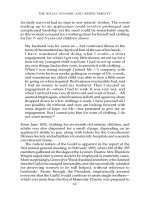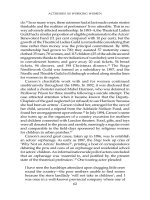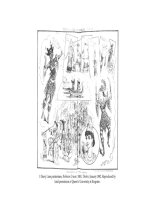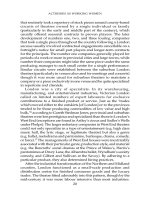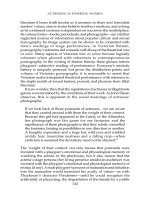ACTRESSES AS WORKING WOMEN 139
Bạn đang xem bản rút gọn của tài liệu. Xem và tải ngay bản đầy đủ của tài liệu tại đây (25.53 KB, 1 trang )
ACTRESSES AS WORKING WOMEN
showing her entire leg and lower pelvis (La Gitana). Frequently, the
feet of danseuses are depicted bare, though the choreography required
heavily padded and darned shoes over the inevitable pink tights. In
this highly conventionalized dance form, the defiance of gravity
suggested unshod other-worldliness: if, in imagination, the feet were
bare, so were the legs, and if the legs were bare the potential revelation
of transparent skirts was unlimited. One visual message of the
Romantic ballet was, therefore, that of highly contrived semi-nudity.
Women did not actually perform barefoot or bare legged until the
Trilby craze of 1895 paved the way for Maud Allan’s ‘classical’ dances
in the first decade of the twentieth century.8
Between the 1830s and 50s, dancers’ hemlines slowly edged up
from mid-calf to the classical length at the knee. By mid-century,
this classical tutu had come to stand for beauty, vigour, suppleness,
vivacity, and harmony in its own right. In repose as well as in motion,
this costume carried over the message of sublimated eroticism that
the fabula, casting, and choreography of Romantic dance had so
ingeniously inscribed. In 1895, Wilhelm (William Charles Pitcher), a
leading designer of ballets and pantomimes, explained just how long
lived and entrenched the conventions of the old ballet were.
Danseuses were particularly reluctant to part from vestimentary
traditions, for as Wilhelm complained, their
beau-ideal of costumes for all occasions is an abbreviated
perversion of a modern debutante’s ball-dress, shorn of twothirds of its length and décolletée to exaggeration. This attire,
which has been so graphically described as ‘beginning too late
and ending too soon,’ is completed by a ribbon knotted round
the throat, and by a corresponding bow in the hair (a favourite
‘finishing touch’); and is insisted on, in spite of its glaring
inappropriateness to the character say, of an evil temptress.9
The tenacity of this costume can be explained, in part, by its
universal adoption by the corps de ballet of the music halls and
the choruses of pantomime, burlesque, and extravaganza after the
1850s. In its new homes, the ballet skirt and its companion, pink
tights, were the sign of the actress, marking a multitude of women
who posed rather than danced in pageants of prettiness as objects
of beauty and allure. It was as much the uniform of their work as
a City man’s derby or a jockey’s coat: nonessential, but nonetheless
irremovable.
110
